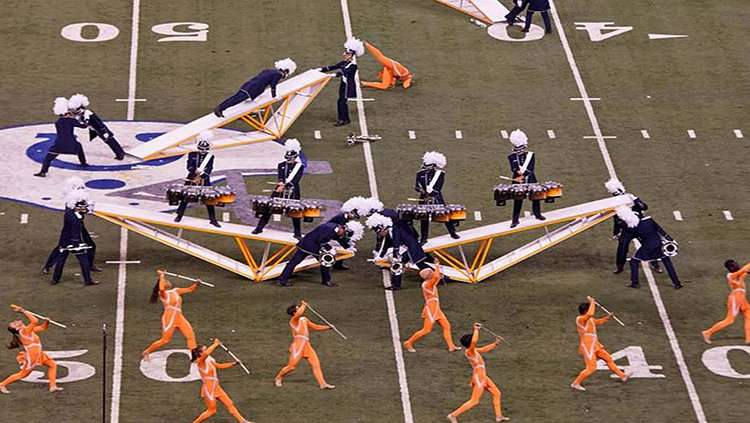Musical training improves visual timing

Drummers and brass players are better able to judge the timing of visual stimuli than members of the color guard, according to a naturalistic study of the world-class drum corps Bluecoats published in eNeuro. This counterintuitive finding extends previous research demonstrating superior sensory learning and memory from cross-training the brain's audio and visual systems.
During an intensive, five-week spring training program, Nestor Matthews and colleagues compared the ability of young adult Bluecoat percussionists, brass players, and color guard to detect the order of moving stimuli mimicking the color guards' visual displays. This study design enabled the researchers to investigate the effect of musical and visual training on visual timing, while controlling for experience and skill level.
The results reveal percussionists perform the task more precisely and quickly than brass players, who perform better than the color guard. Taken together with findings from neuroimaging and brain stimulation research, this pattern suggests musical training shapes cortical areas responsible for synchronizing rhythm and behavior.
More information: Superior Visual Timing Sensitivity in Auditory but not Visual World Class Drum Corps Experts, eNeuro, DOI: 10.1523/ENEURO.0241-18.2018

















